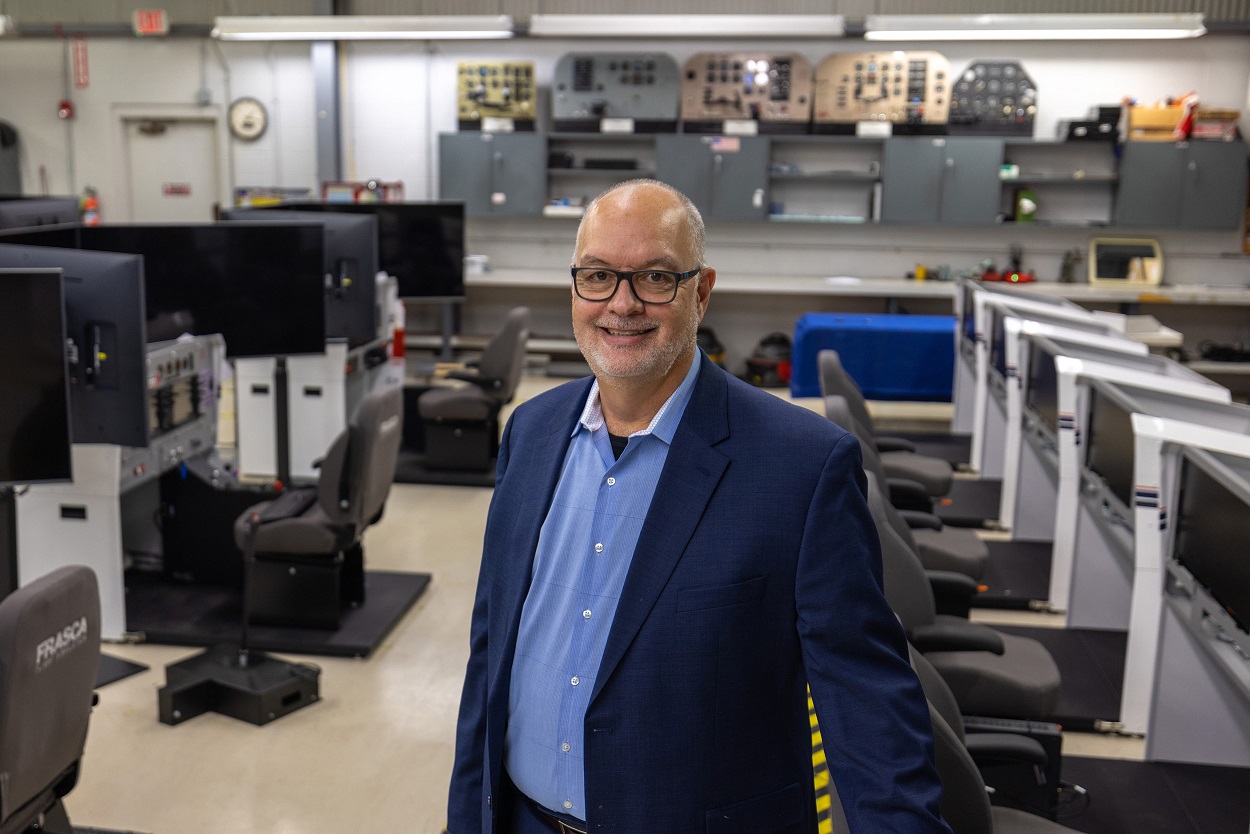Click Here to View This Page on Production Frontend
Click Here to Export Node Content
Click Here to View Printer-Friendly Version (Raw Backend)
Note: front-end display has links to styled print versions.
Content Node ID: 414449
Two leaders in the aviation training industry came from humble beginnings. FlightSafety International started with a rented Link trainer in 1951, while FRASCA’s origins began when its founder served as a flight instructor in the U.S. Navy.
More than 75 years after A.L. Ueltschi began FlightSafety with a rented wooden box in the shape of an airplane, and over 60 years after Rudy Frasca built his own flight simulator and founded what became FRASCA International in his garage, the two companies have come together.
In January 2022, FlightSafety acquired FRASCA as a subsidiary, allowing their combined talents to take aviation training to the next level. The two companies are sharing engineering knowledge and talents to build new devices that tie FRASCA’s expertise in flight training devices (FTDs) to FlightSafety’s full-flight simulators.
ORIGINS OF FLIGHT TRAINING
Serving for years as a private pilot, to Pan Am founder Juan Trippe, Ueltschi realized corporate pilots didn’t receive the same formal flight training that their peers did with the airlines. FlightSafety was created to change that.
FlightSafety pioneered the factory-authorized training model, initially with Falcon jet in 1966, and then to nearly every major business and corporate manufacturer over the next half decade. Creating type-specific flight trainers with a hydraulic motion base that used computer technology to power each model, including early Falcon, Learjet and Gulfstreams.
The company secured its name in aviation training, opening Learning Centers first in the United States, and then throughout North America and Europe. By the end of the 1970s, it had 16 Learning Centers and was operating 30 simulators. Today, partnerships have also been developed with Embrer, Boeing and Airbus.

FRASCA’S PATH
Meanwhile, FRASCA became known for producing high-fidelity, fixed-based FTDs and cockpit trainers for flight schools and universities. Since its first instrument ground trainer in 1960; FRASCA has delivered more than 3,000 devices worldwide.
FRASCA focused on creating training solutions for its customers, producing devices that met their training requirements without overrunning their budgets. The devices they built – including Advanced Aviation Training Devices (AATD) and Level D Full Flight Simulators (FFS) – all had to answer their needs and work in their environments. FRASCA focused on the tactile feel in cockpit training, and the versatility that its devices provided.
FRASCA focused on small general aviation aircraft while FlightSafety concentrated on business aircraft and regional and airline jets. Innovations were common at each, including integrating digital controls, full-motion bases and leaps in visual system technology that made each training session more and more realistic. The two companies even interacted as FRASCA purchased material from FlightSafety to build its products and FlightSafety acquired simulators from FRASCA.
Since 2021, FRASCA has worked on the team that has developed Level 6 and 7 TH-73A Advanced Helicopter Training Systems FTDs for the U.S. Navy, while FlightSafety supplied instructors and aircrew training support. FRASCA helped build a training ecosystem that guides students from familiarization to being proficient, and ready to take on more advanced training scenarios. The smaller footprint of the TH-73A Part Task Trainer meant it was more cost-effective to manufacture and allowed more devices to be operated at once. The eight new FTDs already delivered to the Navy allowed more students to gain the experience they need to become fully operational pilots as soon as possible.
That teamwork on the Navy project led FlightSafety to seek out more ways FRASCA could enhance other training devices that they had expertise in. Bringing the two companies together creates a high-quality training environment across all aspects of aviation training.

BRIGHT FUTURE TOGETHER
The FlightSafety and FRASCA relationship helps answer the pressing need for more qualified pilots to enter the aviation industry. As pilots are aging out of the system, more and more will be needed by the airlines, as well as corporate flight departments, to take their place.
To answer the call of the potentially 30,000 airline pilots needed, FlightSafety is incorporating FRASCA strengths into its designs and engineering to create a faster path for pilot training, without sacrificing quality or safety.
The combined effort allows a seamless training experience over aircraft model and training platform for their customers, including Republic Airways and its Leadership in Flight Training (LIFT) Academy, which recently placed an order for eight FRASCA RTDs.
FlightSafety engineers have already begun sharing flight characteristics and programming data with FRASCA engineers to enhance FTDs for use at Learning Centers and in the flight school and university markets represented by FRASCA. In turn, FRASCA is sharing the knowledge gained during its work on projects such as military helicopter training and in the growing market for mixed-reality simulation.
The FRASCA mixed-reality helicopter trainer was demonstrated in the FlightSafety booth at the 2022 I/ITSEC conference, showing how mixed reality combines a real cockpit with virtual reality imagery of the outside world. This mix of real and virtual world is accomplished through MR goggles. The footprint of the MR trainer is much smaller than a conventional FFS or FTD but still provides high-fidelity replication of inside and outside the cockpit. Sensors that track the pilot’s eye movements provide instructors with a powerful instructional tool that shows where the pilot is looking.
Mixed-reality training technology is still in the beginning stages but is already on a path to expand from defense to commercial and corporate aviation training. As it does, FlightSafety and FRASCA are working together to lead the way.